History
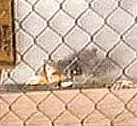 As a writer, I don’t usually have very much time for reading. Yesterday, however, on a long drive with my mom and sister, Cheryl, heading to Wisconsin to visit our family out there, I found myself with a few minutes to read. Since being in contact with Jerry Schemmel, who is a survivor and hero of the United Flight 232 crash in Sioux City, Iowa, I have been thinking a lot about the plane crash that took my Great Aunt Gladys’ life. Jerry wrote a book about his experience, and I have purchased that, but while waiting for that book, I had started another book about that flight, and the miracle that it really was. There is much that we really had no idea about when that crash took place 25 years ago July 19th. For one thing, the DC-10 should not be able to fly…at all…with the hydraulics gone, and yet that crew managed to keep that plane in the air for an astonishing 45 minutes after losing the number two engine and all of their hydraulics.
As a writer, I don’t usually have very much time for reading. Yesterday, however, on a long drive with my mom and sister, Cheryl, heading to Wisconsin to visit our family out there, I found myself with a few minutes to read. Since being in contact with Jerry Schemmel, who is a survivor and hero of the United Flight 232 crash in Sioux City, Iowa, I have been thinking a lot about the plane crash that took my Great Aunt Gladys’ life. Jerry wrote a book about his experience, and I have purchased that, but while waiting for that book, I had started another book about that flight, and the miracle that it really was. There is much that we really had no idea about when that crash took place 25 years ago July 19th. For one thing, the DC-10 should not be able to fly…at all…with the hydraulics gone, and yet that crew managed to keep that plane in the air for an astonishing 45 minutes after losing the number two engine and all of their hydraulics.
That situation…total loss of hydraulics should have immediately thrown the plane into a rollover situation…meaning that it should have rolled onto its back. The events that would have followed should have been a fast spiral downward, causing the wings and tail to break off of the plane. The plane should have then gone barreling into the ground like a rocket, resulting in the instant death of all persons on board. The fact that none of the things that should have happened…did happen, caused all those who were trying to help the plane to assume that the pilots has misdiagnosed the problem that the plane had. Some even assumed that they could land in Chicago, Illinois, instead of Sioux City, Iowa. I’m sure that to the crew, this all seemed incredible. The people helping them should have known that they knew how to 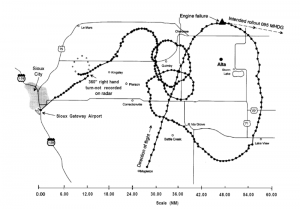 read their instruments, and they did, but what they were saying was impossible…totally impossible. Nevertheless, it was happening, and the pilots were flying it…against all odds…against the impossible. They even called the people at United Airlines Systems Aircraft Maintenance, also known as SAM to see if they could help. They thought the pilots had misdiagnosed the problem too, until they confirmed that the hydraulic fluid had all leaked out. The people at SAM said later that they had no idea what to say to the crew, because they felt like they were talking to four dead men. They didn’t believe anyone could survive it.
read their instruments, and they did, but what they were saying was impossible…totally impossible. Nevertheless, it was happening, and the pilots were flying it…against all odds…against the impossible. They even called the people at United Airlines Systems Aircraft Maintenance, also known as SAM to see if they could help. They thought the pilots had misdiagnosed the problem too, until they confirmed that the hydraulic fluid had all leaked out. The people at SAM said later that they had no idea what to say to the crew, because they felt like they were talking to four dead men. They didn’t believe anyone could survive it.
There was no procedure for a full loss of hydraulics. Flight simulators didn’t teach that scenario, because it was not considered survivable. It had never happened…and if it had, no one survived, because this was not a survivable event…at least it wasn’t until that day. This pilot and co-pilot were flying by the seat of their pants, and the normal fixes wouldn’t work. Captain Al Haynes simply moved on instinct when he used the throttles. He thought he had seen something in the manual about it, but I’m not sure it was there, because it was not supposed work. He was basically using power to control the plane. The plane wanted to turn over, and so, using asymmetric thrust, he was able to keep it making wide loops, and finally ended up at the airport. It would also take the help of a fourth person to make this work. Thankfully they had DC-10 instructor, Dennis Fitch on board to handle the extra need. Each loop caused them to lose altitude, and so at one point they didn’t think they would make the airport. In the end, they had to use a runway that had not been used or maintained in a year. That did not contribute to the crash, however.
I have watched the crash video many times, and you can see that the crew…and I do say the crew, because it took all three of them, and the instructor to run all 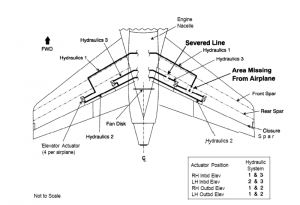 the controls that it took to maneuver the plane…almost landed the plane safely. They were so close. Then the plane tried one more time to roll over, causing the right wing to tap the ground. That was all it took to cartwheel the plane down the runway. In watching that crash, I have no idea how anyone survived it at all…much less more than half of the occupants, including all of the crew. It was a miracle of God, and an answer to the many prayers that were being prayed on board that day. I wish Aunt Gladys had survived, but that was not to be. Nevertheless, there were many heroes that day, and the crew who flew that plane were definitely the greatest.
the controls that it took to maneuver the plane…almost landed the plane safely. They were so close. Then the plane tried one more time to roll over, causing the right wing to tap the ground. That was all it took to cartwheel the plane down the runway. In watching that crash, I have no idea how anyone survived it at all…much less more than half of the occupants, including all of the crew. It was a miracle of God, and an answer to the many prayers that were being prayed on board that day. I wish Aunt Gladys had survived, but that was not to be. Nevertheless, there were many heroes that day, and the crew who flew that plane were definitely the greatest.
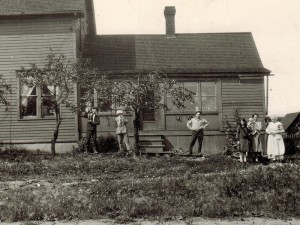 Through the years, people have taken in boarders to help make ends meet. These days, people might have a roommate to share the financial load when buying a house or renting an apartment, but that didn’t happen often in years gone by. When it became necessary to find a way to make ends meet, people took in boarders…usually people they didn’t know. They might be people who were working in the area, or in college towns, maybe students. For my grandmother, I think it must have been men working in the area. I’m sure she didn’t know the men prior to renting them a room, but they quickly became like family. She wanted to get a picture that included the boarders, and one of the men even held my Uncle Bill on his shoulder. Times were just different then, and most people were decent and trustworthy. There was, for the most part, a moral code that was followed.
Through the years, people have taken in boarders to help make ends meet. These days, people might have a roommate to share the financial load when buying a house or renting an apartment, but that didn’t happen often in years gone by. When it became necessary to find a way to make ends meet, people took in boarders…usually people they didn’t know. They might be people who were working in the area, or in college towns, maybe students. For my grandmother, I think it must have been men working in the area. I’m sure she didn’t know the men prior to renting them a room, but they quickly became like family. She wanted to get a picture that included the boarders, and one of the men even held my Uncle Bill on his shoulder. Times were just different then, and most people were decent and trustworthy. There was, for the most part, a moral code that was followed.
I’m sure the men helped out with things around the place while they lived at my grandmother’s home, and I’m also sure they ate some of their meals with the family. I also seriously doubt that the rent charged was very much, because in the 1930’s, times were hard and people couldn’t afford to pay very much. These men were grateful, I’m sure, for the opportunity to have a place to live, and a nice family to live with. Many of those men were far from home, trying to make a living for their families who were waiting for their return. It was quite a lonely way to support your family, but you did what you had to do.
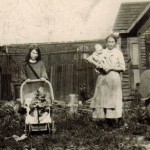
I’m not sure how long or how many times my grandmother had boarders living in her home, but I know she was a kindhearted woman who would have had a hard time thinking about some man sleeping in the freezing cold winter weather when her home had a spare room that he could have. And having a little help around the place wasn’t a bad thing either, because my grandfather worked on the railroad, and my dad and Uncle Bill were just little boys, so they couldn’t help much. The reasons that people take in boarders or roommates vary, but it usually boils down to need, either the need of the family to have an extra income, or the need of the boarder to have a place to live. It’s as simple as that.
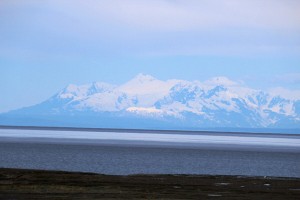 Our last day in Alaska, found Bob and me exploring the Anchorage area. None of our family had been there before, so this part was new territory. W had seen the pictures my parents took, but they didn’t get to go to Anchorage. I wanted to be able to give my mom and my sisters an idea of just how beautiful the Anchorage area is. We had planned to rent a car, but they are really expensive in Anchorage, and we love to walk, so we stored our luggage at the airport, and headed back to town. Once our shuttle got us to the downtown area, we started walking…without really knowing where we were going. It was almost like I knew where to go. I wanted to get down to the water, and the first thing we found was the Tony Knowles Coastal Trail. I felt like we had found our way. We started down the trail, and were pleased to see that the locals who used the trail were as friendly as the people we see on the trail near our house. We walked a ways, and were rewarded with beautiful views of the Knik Arm of the Cook Inlet.
Our last day in Alaska, found Bob and me exploring the Anchorage area. None of our family had been there before, so this part was new territory. W had seen the pictures my parents took, but they didn’t get to go to Anchorage. I wanted to be able to give my mom and my sisters an idea of just how beautiful the Anchorage area is. We had planned to rent a car, but they are really expensive in Anchorage, and we love to walk, so we stored our luggage at the airport, and headed back to town. Once our shuttle got us to the downtown area, we started walking…without really knowing where we were going. It was almost like I knew where to go. I wanted to get down to the water, and the first thing we found was the Tony Knowles Coastal Trail. I felt like we had found our way. We started down the trail, and were pleased to see that the locals who used the trail were as friendly as the people we see on the trail near our house. We walked a ways, and were rewarded with beautiful views of the Knik Arm of the Cook Inlet.
Off in the distance I captured a range of mountains, that I later realized contained a view of 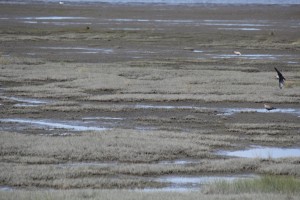 Mount McKinley. The native name for Mount McKinley is, of course, Denali, which means High One. I found the native words for things very interesting. For instance, the when we were in Juneau, I found out that auck means lake. That one was funny because of the English speaking people trying to help the natives name things. The natives had called it Auck, the English speakers liked it, so it became Auck Lake…or Lake Lake…which I found quite funny. Sometimes we just need to leave well enough alone.
Mount McKinley. The native name for Mount McKinley is, of course, Denali, which means High One. I found the native words for things very interesting. For instance, the when we were in Juneau, I found out that auck means lake. That one was funny because of the English speaking people trying to help the natives name things. The natives had called it Auck, the English speakers liked it, so it became Auck Lake…or Lake Lake…which I found quite funny. Sometimes we just need to leave well enough alone.
I was very excited about getting the picture of Denali, because it is so often shrouded in clouds, and is hard to capture without it being too covered. The mud flats on the Knik Arm were very strange. They looked like normal ground with grass, but in reality they were moss covered mud, and quite dangerous. People are warned to stay off of them. They tend to suck things in and refuse to let go…causing the death of humans or animals over the size of a bird.
As we walked along, the views continued to be breath taking. Bob was in hope that we would 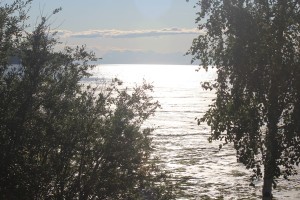 be able to see the mud flats after the tide came in. We did not, but we could tell that the tide was starting to come in toward the end of our journey. I found myself quite amazed that we walked for about five hours, and the only issue I had, that day or the next was sore feet. I don’t know if we were just enjoying ourselves and not thinking about the time or distance that we had traveled or what made the difference, but I was happy, because I very much enjoyed that walk along the Tony Knowles Coastal Trail. I will never forget the amazing views we had in front of us. It was absolutely beautiful.
be able to see the mud flats after the tide came in. We did not, but we could tell that the tide was starting to come in toward the end of our journey. I found myself quite amazed that we walked for about five hours, and the only issue I had, that day or the next was sore feet. I don’t know if we were just enjoying ourselves and not thinking about the time or distance that we had traveled or what made the difference, but I was happy, because I very much enjoyed that walk along the Tony Knowles Coastal Trail. I will never forget the amazing views we had in front of us. It was absolutely beautiful.
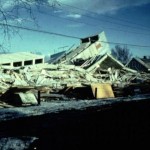
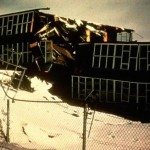 While my husband, Bob and I were in Anchorage, Alaska recently, we went to the area visitor’s center, where we watched a movie about the 1964 Great Alaska Earthquake that occurred there. It was the largest earthquake in the history of the United States, registering 9.2 on the Richter Scale. The earthquake occurred on March 27, 1964 at 5:36pm, just 5 years after Alaska became the 49th state. It was Good Friday, and a lot of places had closed early for the holiday…a fact credited for savings lives. The death toll was relatively low, at 131…most of whom were killed by the tsunami that followed the quake. That number is amazing when you consider the magnitude of the quake. The property damage, was a very different thing. The main street became two levels. The school split into two sections, homes were leveled, and streets were split down the middle. All that is common in earthquakes…especially of that magnitude, but there were some things that were less common.
While my husband, Bob and I were in Anchorage, Alaska recently, we went to the area visitor’s center, where we watched a movie about the 1964 Great Alaska Earthquake that occurred there. It was the largest earthquake in the history of the United States, registering 9.2 on the Richter Scale. The earthquake occurred on March 27, 1964 at 5:36pm, just 5 years after Alaska became the 49th state. It was Good Friday, and a lot of places had closed early for the holiday…a fact credited for savings lives. The death toll was relatively low, at 131…most of whom were killed by the tsunami that followed the quake. That number is amazing when you consider the magnitude of the quake. The property damage, was a very different thing. The main street became two levels. The school split into two sections, homes were leveled, and streets were split down the middle. All that is common in earthquakes…especially of that magnitude, but there were some things that were less common.
At the Alaska Wildlife Conservation Center, there exists a stand of dead trees. It might make sense to cut these trees down, but it would not be an easy thing to do. The ground dropped 10 feet in the 1964 earthquake, and the influx of salt water from 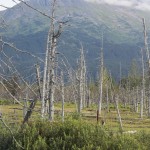
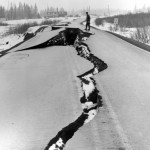 the inlet killed the trees…petrifying them at the same time. To cut the trees down takes approximately 4 hours per tree, and seemed too impossible a job to tackle. The settlement of Portage, Alaska sank six feet, putting it below sea level. The town doesn’t really exist now, except as a ghost town. Everyone has had to relocate to nearby high ground.
the inlet killed the trees…petrifying them at the same time. To cut the trees down takes approximately 4 hours per tree, and seemed too impossible a job to tackle. The settlement of Portage, Alaska sank six feet, putting it below sea level. The town doesn’t really exist now, except as a ghost town. Everyone has had to relocate to nearby high ground.
But the area that hit me the most was an area called Earthquake Park. The four minutes that the earthquake rattled the area caused the Turnagain Heights neighborhood to virtually disappear. I guess the damage to that area is technically a landslide, but it was really more of a wave motion. During those four minutes, the land rolled up and down like a roller coaster. When the quake was over, many of the homes in that neighborhood had been literally swallowed up by the quake. As we looked at the area during our city tour and again as we walked the Tony Knowles Coastal Trail, it felt so strange to me. Our guide told us that if you walked through the land that went uphill and then down hill, just like a wave, you could still see chimneys sticking up out of the ground, where the home that was attached to them had literally disappeared beneath the earth. I simply couldn’t imagine what it must have been like to have the home you 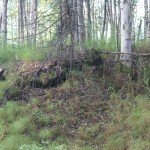
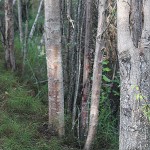 were in, be swallowed up by the earth. I was not able to get any death toll that was specific to the Turnagain Heights area, but with so many people home for the coming holiday, I think there must have been several or even more. It’s hard to describe what I felt in the Earthquake Park area, but I guess it was a mixture of awe and loss. I don’t know how that much devastation could occur on a holiday weekend, with no loss of life. The area felt like you needed to be quiet…as a show of respect maybe. I can’t really say exactly, I just know that it is a place I will not soon forget.
were in, be swallowed up by the earth. I was not able to get any death toll that was specific to the Turnagain Heights area, but with so many people home for the coming holiday, I think there must have been several or even more. It’s hard to describe what I felt in the Earthquake Park area, but I guess it was a mixture of awe and loss. I don’t know how that much devastation could occur on a holiday weekend, with no loss of life. The area felt like you needed to be quiet…as a show of respect maybe. I can’t really say exactly, I just know that it is a place I will not soon forget.
 In times past…long before the Cruise Craze occurred, the average person didn’t really travel by ship. Immigrants did, but mostly they spent their entire life’s savings to make the journey to a new country, and often they traveled in the steerage class…without all the amenities of the people in 1st class. As we saw on the movie Titanic, the 1st class passengers were treated like royalty, because they had a lot of money, while the others were kept separate…like they might rub off on the 1st class passengers, or get them dirty or something.
In times past…long before the Cruise Craze occurred, the average person didn’t really travel by ship. Immigrants did, but mostly they spent their entire life’s savings to make the journey to a new country, and often they traveled in the steerage class…without all the amenities of the people in 1st class. As we saw on the movie Titanic, the 1st class passengers were treated like royalty, because they had a lot of money, while the others were kept separate…like they might rub off on the 1st class passengers, or get them dirty or something.
These days, the rich and famous don’t exactly take cruises. If they want to cruise, the get a yacht or they just fly to where they want to go, often in their own plane. If they are on a cruise ship, then they are really traveling incognito, because I have not 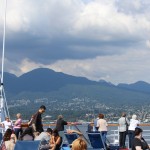 noticed anyone rich or famous on my two cruises. Mostly I think that the cruise vacation gives the middle class citizen the chance to live like a king for a few days, and forget their problems for a while.
noticed anyone rich or famous on my two cruises. Mostly I think that the cruise vacation gives the middle class citizen the chance to live like a king for a few days, and forget their problems for a while.
On the cruises I have taken, as well as the ones my family has taken, there are people from all walks of life, sharing this space and the amenities it offers for a little time of respite from their day to day working lives. And how cool is that!! There is no snobbery, and no special place to dine that only the rich can go. Everyone is treated like royalty. Although, unless you get a balcony room, there is one deck you don’t have access to. No great loss, if you ask me.
I find that quite refreshing really. So often, we are placed in classes, whether we like it or not. You can play golf and the club…if 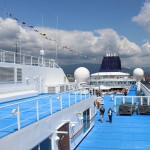 you can afford the fees. You can belong to this or that club…again, if you can afford it. And it is true that the people on a cruise ship must be able to afford the cost, but there are ways to keep the cost down and still have an amazing time. It is something you can save up for, and take your own opportunity to live like kings for a little while.
you can afford the fees. You can belong to this or that club…again, if you can afford it. And it is true that the people on a cruise ship must be able to afford the cost, but there are ways to keep the cost down and still have an amazing time. It is something you can save up for, and take your own opportunity to live like kings for a little while.
I think everyone should try this type of trip when they can. It gives you an opportunity to let someone else wait on you for a while, and all you do is sit back and enjoy the ride. It is such a great way to de-stress, and don’t we all need that once in a while? I know I do. Give it a try. It’s great to live like kings…even if it’s only temporary.
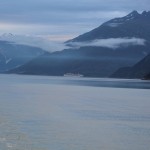 As a kid, I heard the song, North to Alaska often. My parents were fascinated with the idea of going to visit there. Dad talked about it so much, that when it came time for their 50th Wedding Anniversary, our gift to them was a simple choice…a cruise to Alaska. They had such a wonderful time, and it was a memory that has lived on. Then a couple of years ago, I started thinking about how great it would be to see Alaska for myself. Everyone talked about how big Alaska was, and as a state, it is…very big, but that is not really what makes Alaska big…as I found out.
As a kid, I heard the song, North to Alaska often. My parents were fascinated with the idea of going to visit there. Dad talked about it so much, that when it came time for their 50th Wedding Anniversary, our gift to them was a simple choice…a cruise to Alaska. They had such a wonderful time, and it was a memory that has lived on. Then a couple of years ago, I started thinking about how great it would be to see Alaska for myself. Everyone talked about how big Alaska was, and as a state, it is…very big, but that is not really what makes Alaska big…as I found out.
There is a quality about Alaska that can’t be described any other way, but big…a vastness that you can actually feel. That was part of the draw for my parents, and then for me. I felt like the pioneers or gold rushers, setting out into the unknown. Yes, it was quite different for me than it was for them, because so many had traveled before me, and the route is known. There are guides all the way. Still, you get a feeling of being in the wilderness, in the last frontier. Alaska truly is just that, the last 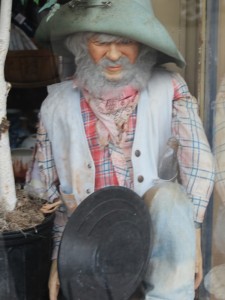 frontier, and yet, how could that still be when it has been a state for 55 years? I suppose that it is because much of Alaska hasn’t changed in all those years. About 94% of the state is still uninhabited…at least by permanent residents. Just knowing that makes Alaska have an air of mystery…of wildness.
frontier, and yet, how could that still be when it has been a state for 55 years? I suppose that it is because much of Alaska hasn’t changed in all those years. About 94% of the state is still uninhabited…at least by permanent residents. Just knowing that makes Alaska have an air of mystery…of wildness.
While in Alaska, I found myself wondering what the gold rush was like. We watched a movie at the visitors center in Anchorage, about the Klondike Gold Rush, and I realized that not only were lives lost in the search for wealth, but lives were destroyed. People lost everything they had…betting on the possibility of striking it rich. Around 100,000 men set out on the journey to the Klondike region in northwestern Canada, most of them by way of Skagway, White Pass, and the Yukon River, where they sailed to the Klondike, but only about 30,000 to 40,000 made it. The rest gave up, or died. Alaska is a place that is very unforgiving. The mountains are very high and topped with glaciers. It was cold and filled with steep climbs. Citrus fruit was scarce, so Scurvy was common. It was a really miserable place to be in winter, and yet they came.
There is still something about Alaska that draws people to it. Yes, there is still gold in Alaska, 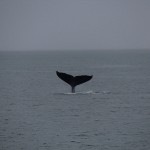 but there is much more to it than that. There is something about its vast wilderness that challenges them…keeps them there or keeps them coming back. Maybe it’s the beauty of the whole place, or the mountains rising sharply right out of the water,…that are able to dwarf a cruise ship, or any other vessel. It could be the hunting and fishing, or maybe the whale watching. It could be any or all of those things, but for me it was a combination of several of these, coupled with a desire to see the things my parents had seen on their trip. So far, Bob and I are the only ones in the family to go to Alaska, besides Mom and Dad, but if I’m not mistaken, more will follow. Alaska has a way of calling your name…drawing you north.
but there is much more to it than that. There is something about its vast wilderness that challenges them…keeps them there or keeps them coming back. Maybe it’s the beauty of the whole place, or the mountains rising sharply right out of the water,…that are able to dwarf a cruise ship, or any other vessel. It could be the hunting and fishing, or maybe the whale watching. It could be any or all of those things, but for me it was a combination of several of these, coupled with a desire to see the things my parents had seen on their trip. So far, Bob and I are the only ones in the family to go to Alaska, besides Mom and Dad, but if I’m not mistaken, more will follow. Alaska has a way of calling your name…drawing you north.
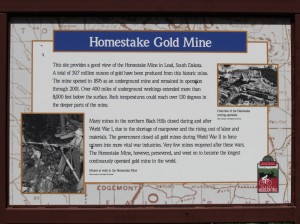 As Bob and I were on our walk on the Mickelson Trail last week, we came across an informational sign on the Homestake Mine. I was really quite surprised as some of the information it contained. Of course, I had read about the discovery of gold in the Black Hills of South Dakota…who hadn’t. The exact date of the discovery is unknown, but the discovery brought many people to the Black Hills…which was in direct violation of the treaty with the Lakota and Cheyenne Sioux Indians. That discovery also brought about the Great Sioux War of 1876…also known as the Black Hills War. Most people will remember that it was during this war, that George Armstrong Custer made his last stand at The Battle of The Little Big Horn.
As Bob and I were on our walk on the Mickelson Trail last week, we came across an informational sign on the Homestake Mine. I was really quite surprised as some of the information it contained. Of course, I had read about the discovery of gold in the Black Hills of South Dakota…who hadn’t. The exact date of the discovery is unknown, but the discovery brought many people to the Black Hills…which was in direct violation of the treaty with the Lakota and Cheyenne Sioux Indians. That discovery also brought about the Great Sioux War of 1876…also known as the Black Hills War. Most people will remember that it was during this war, that George Armstrong Custer made his last stand at The Battle of The Little Big Horn.
The Homestake Mine, near Lead, South Dakota, was founded in 1876 and while it changed hands several times, it was in operation until all the gold mines were mandatorily shut down to encourage the miners to work in more important fields to help with the war effort in World War II. The thing that surprised me the most was that most of the gold mines did not reopen after the war was over. Gold is such a valuable metal, so why would the mines not reopen? One thought comes to mind. Gold was mined underground, sometimes deep underground, as in the case of the Homestake Mine. Underground mining is dangerous as we have seen over the years, with cave-ins and blasts from the gases that can be found there. I have to wonder if the men decided that the new skills they had learned during World War II were a better way to make money and maybe, stay alive.
Nevertheless, the Homestake mine was one that reopened after the war, and then went on to continue to be a successful mine until their last production of ore in 2001. The Homestake Mine ceased production at the end of 2001, due to low gold prices, poor ore quality, and high costs. The Homestake Mine Company had merged with The Barrick Gold Corporation and they were dewatering the mine as DUSEL negotiations continued. This was a slow process and very expensive at $250,000 per month. The mining company was having great difficulty justifying the cost, and the process ceased on June 10, 2003 and the mine was closed completely.
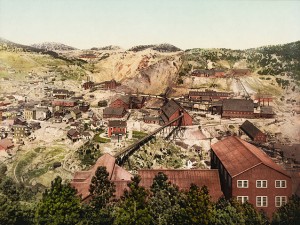
These days, there are a number of operating gold mines around the country, but the state with the largest production of gold is Nevada. The need and desire for gold did not cease after World War II, it was probably just more that a lot of mines didn’t produce the quality or quantity that was really needed to be successful. It almost seems as if the closure of the mines in World War II had a greater impact than anyone would have ever expected. Whatever her end was, the Homestake was not a casualty of the World Wars, and went on to become the longest continuously operating gold mine in the world.
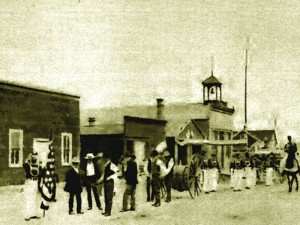 While I am not a real Casper native, I have lived here since I was 3 years old. In a city that is 125 years old, that means that I have lived here for 44% of the years that Casper has existed. During my years here, I have learned that Casper was named after the fort that had existed here, called Fort Casper. Fort Casper was named after Lieutenant Caspar Collins, who was killed by Indians near the fort in 1865, but the Army misspelled his name. For anyone who has lived here very long…or at least attended public school here, that was common knowledge, as well as a school field trip most of us took. That fact was one of the first things a young student in Casper should know.
While I am not a real Casper native, I have lived here since I was 3 years old. In a city that is 125 years old, that means that I have lived here for 44% of the years that Casper has existed. During my years here, I have learned that Casper was named after the fort that had existed here, called Fort Casper. Fort Casper was named after Lieutenant Caspar Collins, who was killed by Indians near the fort in 1865, but the Army misspelled his name. For anyone who has lived here very long…or at least attended public school here, that was common knowledge, as well as a school field trip most of us took. That fact was one of the first things a young student in Casper should know.
When the people of Casper first decided to incorporate, this was a pretty wild town. It was filled with mostly saloons, dancing girls, and prostitutes. That was really quite typical of most early wild west towns. The residents Casper asked the officials of Carbon County, where Casper was located until Natrona County split from Carbon County, if they could incorporate the town of Casper. The request was approved on July 8, 1889…125 years ago today, and Casper was born. Of course, the citizens of Casper knew that things would have to change because there 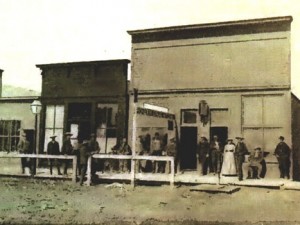 were things that made a town a proper town, and things that made it a lawless hangout. A proper town needed water, streets, schools, a fire department, a library, and a government to assure its stability. The people of Casper elected George Mitchell as mayor, and Robert White, Peter Demorest, Alexander McKinney and John Adams as councilmen. Before long Casper would be home to three county courthouses. The first one on David Street built in 1895, the second in the middle of North Center at A Street built in 1908, and the present county building on Center between A and B Streets was built in 1940.
were things that made a town a proper town, and things that made it a lawless hangout. A proper town needed water, streets, schools, a fire department, a library, and a government to assure its stability. The people of Casper elected George Mitchell as mayor, and Robert White, Peter Demorest, Alexander McKinney and John Adams as councilmen. Before long Casper would be home to three county courthouses. The first one on David Street built in 1895, the second in the middle of North Center at A Street built in 1908, and the present county building on Center between A and B Streets was built in 1940.
In the early years cattle and sheep ranching was the main source of Casper’s wealth, and the most successful ranchers built the fine houses in Casper’s mansion district located south of the downtown area. Soon, however the wealth shifted more to oil, when the Salt Creek Field, 40 miles north of Casper, a rich source of oil, was discovered. Soon refineries went up, and Casper became a boom town. Much has changed over the years, and I’m sure that very little about Casper is like it used to be. I suppose that if the city founders could see it now, they would be amazed…or maybe they could see that potential all along. 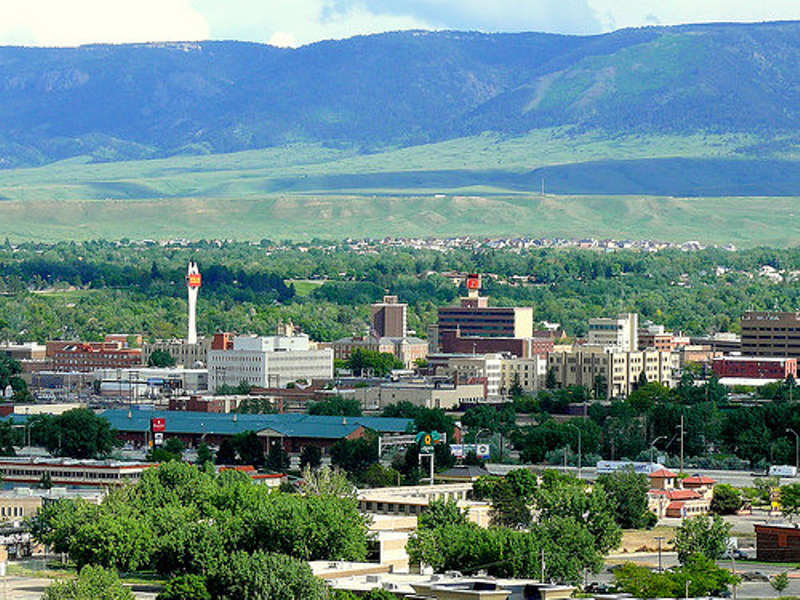 As for me, I can recall many changes too. I remember when Walsh Drive was the edge of town. Kelly Walsh High School was almost on the prairie. I also remember when Kmart was being built…at the current Hobby Lobby location, and when it was built in its current location. I remember when the Texaco Refinery closed, and a lot of its workers, including my Uncle Larry took the transfer that would move him and my Aunt Jeanette to Louisiana for a number of years. Many businesses have come and gone over the years, as have people, but Casper has remained and thrived. Today is Casper’s 125th birthday. Happy birthday Casper!!!
As for me, I can recall many changes too. I remember when Walsh Drive was the edge of town. Kelly Walsh High School was almost on the prairie. I also remember when Kmart was being built…at the current Hobby Lobby location, and when it was built in its current location. I remember when the Texaco Refinery closed, and a lot of its workers, including my Uncle Larry took the transfer that would move him and my Aunt Jeanette to Louisiana for a number of years. Many businesses have come and gone over the years, as have people, but Casper has remained and thrived. Today is Casper’s 125th birthday. Happy birthday Casper!!!
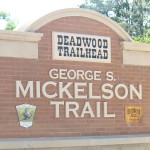 For a number of years now, Bob and I have walked the Mickelson Trail in the Black Hills of South Dakota. Most is the time the trail seems like just that…a trail, but when it travels through an old cut where the trains went through a hillside, without having to go over it, I am reminded again that it really was a railroad. As we walk through those cuts, I can almost imagine a train coming through there. Bob can too, because he jokingly asked if we should watch out for the train. It is like we can see the trains, like a ghost train or an echo train.
For a number of years now, Bob and I have walked the Mickelson Trail in the Black Hills of South Dakota. Most is the time the trail seems like just that…a trail, but when it travels through an old cut where the trains went through a hillside, without having to go over it, I am reminded again that it really was a railroad. As we walk through those cuts, I can almost imagine a train coming through there. Bob can too, because he jokingly asked if we should watch out for the train. It is like we can see the trains, like a ghost train or an echo train.
It’s strange to walk where only trains have traveled prior, but with the Rails to Trails program, 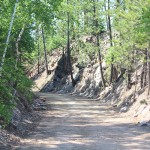 many more people are doing just that. Since the trains are no longer using those tracks, it has become a great way to reclaim the space, and for people to be able to see the countryside on a trail that is a little easier that some of the backwoods trails that seasoned hikers take. Bob and I love our backwoods trails too, but trails like the Mickelson Trail and the neighborhood trail that we walk at home make for a good place to get some exercise without having to go to the gym, and neither of us likes going to the gym anyway.
many more people are doing just that. Since the trains are no longer using those tracks, it has become a great way to reclaim the space, and for people to be able to see the countryside on a trail that is a little easier that some of the backwoods trails that seasoned hikers take. Bob and I love our backwoods trails too, but trails like the Mickelson Trail and the neighborhood trail that we walk at home make for a good place to get some exercise without having to go to the gym, and neither of us likes going to the gym anyway.
The cuts in the Mickelson remind me a lot of our travels on the 1880 Train, between Hill City, South Dakota and Keystone, South Dakota. That train goes through a lot of those same cuts, and maybe that is why we can both  almost hear and see the echo trains. It’s a place we have been before…a lot. We love to ride the 1880 Train. It is usually the highlight of our annual trip to the Black Hills…other than our hike up Harney Peak, which is our favorite hike of all the hiking we do.
almost hear and see the echo trains. It’s a place we have been before…a lot. We love to ride the 1880 Train. It is usually the highlight of our annual trip to the Black Hills…other than our hike up Harney Peak, which is our favorite hike of all the hiking we do.
As we move on past the cut in the Mickelson Trail, my thoughts move back into the reverie I always feel when I am out on the trail…any trail. There is such peacefulness there, and it’s so quiet most of the time. I can just lose myself in thought, which is probably why we don’t talk much on the trail. We are simply enjoying the scenery, and going where trains have traveled.
 When we think of Independence Day, most of us think of fireworks, picnics, and a day off from work. What I wonder about though, is if most of us know why we shoot off fireworks on this day. The answer may surprise you, because many people did not know this. Even before the signing of the Declaration of Independence, John Adams had a vision of a huge celebration taking place in the city square. He wrote a letter to Abigail Adams on July3, 1776. It said that our Declaration of Independence should be commemorated with “Pomp and Parade, with Shews, Games, Sports, Guns, Bells, Bonfires and Illuminations from one End of this Continent to the other from this Time forward forever more.” The first Independence Day holiday was celebrated on July 4, 1777. On that day, at that time in history, the city was beautifully illuminated. That day felt to him like a day that should be filled with patriotism from a grateful nation to its freedom fighters. And, I believe that is what many people think today, but I also think many people forget about the sacrifice that was made so long ago.
When we think of Independence Day, most of us think of fireworks, picnics, and a day off from work. What I wonder about though, is if most of us know why we shoot off fireworks on this day. The answer may surprise you, because many people did not know this. Even before the signing of the Declaration of Independence, John Adams had a vision of a huge celebration taking place in the city square. He wrote a letter to Abigail Adams on July3, 1776. It said that our Declaration of Independence should be commemorated with “Pomp and Parade, with Shews, Games, Sports, Guns, Bells, Bonfires and Illuminations from one End of this Continent to the other from this Time forward forever more.” The first Independence Day holiday was celebrated on July 4, 1777. On that day, at that time in history, the city was beautifully illuminated. That day felt to him like a day that should be filled with patriotism from a grateful nation to its freedom fighters. And, I believe that is what many people think today, but I also think many people forget about the sacrifice that was made so long ago.
According to some historians, the first fireworks were invented in India, but the first fireworks came to the West by way of China. Most if the early fireworks were simply repurposed military munitions, used to entertain rather than to frighten or kill the enemy, which is fitting in a way, because it was those same military munitions that brought about our freedom from England. From those ancient beginnings, came rockets, by stuffing a container with gunpowder and leaving a hole in one end for propulsion. These were called “ground-rats” or “fire rats” and they were highly unpredictable. That made them somewhat less effective, but as anyone who has ever watch a modern day display go a little haywire, they were also pretty entertaining.
So, why do most people love the fireworks today? Is it because of the great technology that  allows it to be synchronized with the music, thereby adding to the festive feel? Is it the continuing patriotism in this country? Or is it simply the splendor of the display…the bright colors and the flashing light show? Well, I suppose it is really a combination if all three of those things. We are a people who love our traditions, and I believe that we are still a very patriotic nation. And, I think we love the tradition that was started by John Adams in 1777. It make us feel patriotic and allows us to honor all our military men and women who have fought through the years to keep our nation free. And really, being a free nation is still what it’s all about. That is the thing we must not forget. Happy Independence Day America!!!
allows it to be synchronized with the music, thereby adding to the festive feel? Is it the continuing patriotism in this country? Or is it simply the splendor of the display…the bright colors and the flashing light show? Well, I suppose it is really a combination if all three of those things. We are a people who love our traditions, and I believe that we are still a very patriotic nation. And, I think we love the tradition that was started by John Adams in 1777. It make us feel patriotic and allows us to honor all our military men and women who have fought through the years to keep our nation free. And really, being a free nation is still what it’s all about. That is the thing we must not forget. Happy Independence Day America!!!

